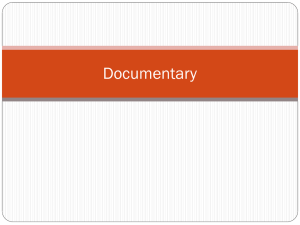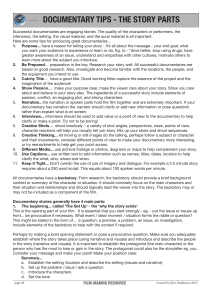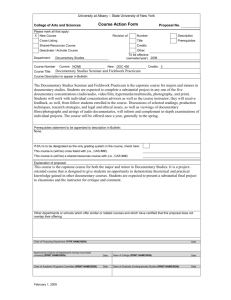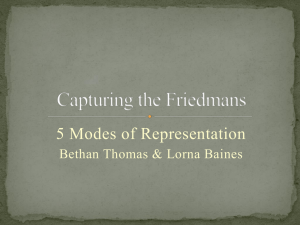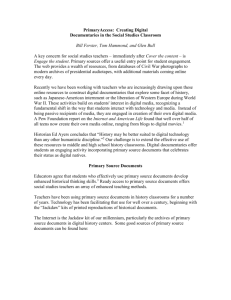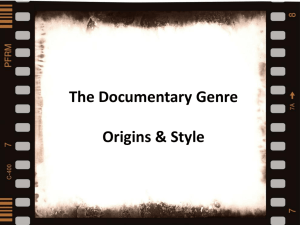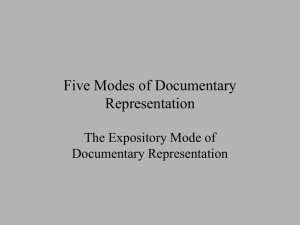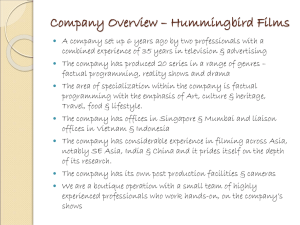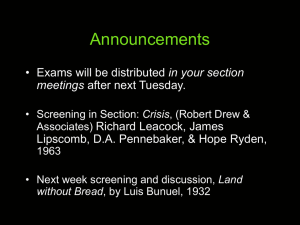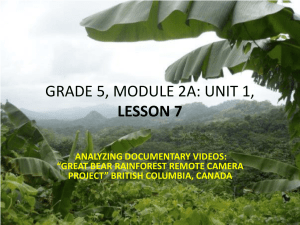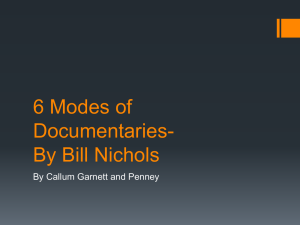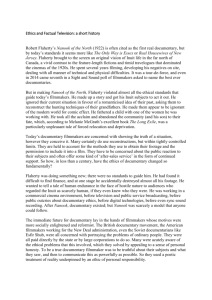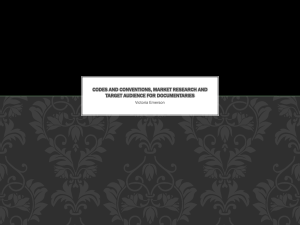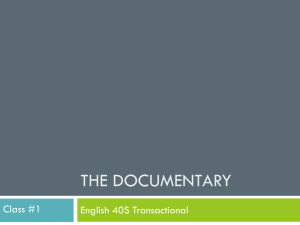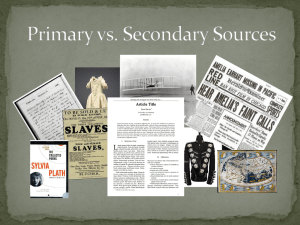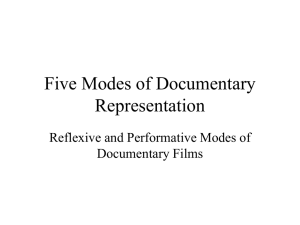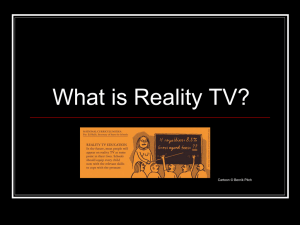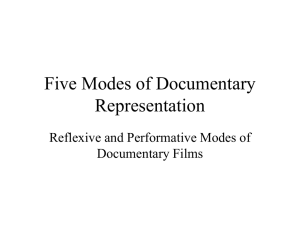Documentary Film
advertisement
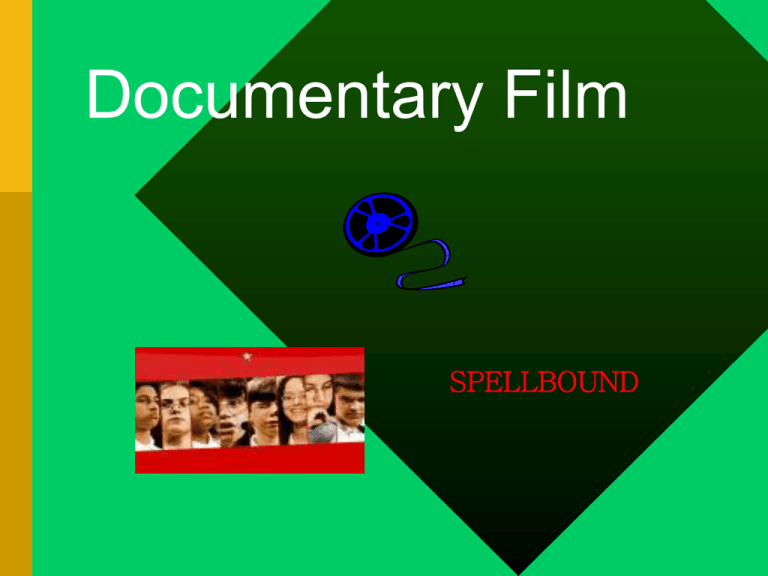
Documentary Film SPELLBOUND What is a Documentary? Films that tell stories about real events and real people using, for the most part, actual images and objects. What is a Documentary? They record what is currently happening in the world or explore what has taken place. They introduce viewers to ideas, people, and experiences that otherwise might not have encountered or challenge them to question what they already know. What is a Documentary? Like fiction films, documentaries can be funny, moving, disturbing, thoughtprovoking, or entertaining. 1st Documentaries 1895 – French Inventor Louis Lumiere developed a lightweight, hand-cranked camera that allowed him to tape daily occurences. Ex: Feeding the Baby, Leaving the Factory, and Arrival of a Train at the Station. These filmings are known as “actualities.” Lumiere’s early works lead to modern cinema. 1st Documentaries Actualities were extremely popular, new, and thrilling to audiences in the 1890’s. Watching Arrival of a Train at the Station made spectators scream and dodge as the film train moved from long shot to close-up, looking as if it would burst through the screen. Distinguishing a Documentary’s Approach Objective Documentaries - Known as “Direct Cinema” - Attempt to record events objectively w/o manipulation or direction. - The camera records life as it unfolds in real time. - Questions are not posed on screen, usually there is no narration, and often subjects do not know of the filmmaker’s presence Distinguishing a Documentary’s Approach Subjective Documentaries - Also known as opinionated documentaries - A distinct point of view is presented by the filmmaker. - Often the filmmaker narrates and participates either as a voice behind the camera or appearing as a character in front of the camera. Distinguishing a Documentary’s Approach Some documentaries use a combination of both objective and subjective approaches. Structure of a Documentary A documentary can be arranged chronologically OR it can move back and forth in time, if doing so is the best way to make a point or illustrate a theme. REAL vs. STAGED Though documentaries are intended to be “real,” filmmakers have been known to fake scenes when real footage was not compelling or did not exist. Ex: Documentary – Nanook of the North – was the first full length documentary about a group of Inuts living on the coast of the Hudson Bay near the Arctic Circle. Much of the documentary was restaged traditional activities of the Inut people, like whale hunting. Documentary Categories Political Dramatize issues and their implications for society; contribute to political debate Political documentaries walk a fine line between advocacy and propaganda Ex: Fahrenheit 9/11; The Collector of Bedford Street Documentary Categories Historical Explore a past event or period of time or the life of someone who lived in the past Archival photos, letters, and face-to-face interviews with historians and scholars are some of the sources historical documentarians draw on. Ex: 4 Little Girls Documentary Category Situational/Cultural/Natural World Help audience understand the world they live in. Ex: Discovery Channel, Travel Channel, Spellbound What categories do the documentaries you’ve seen fit? Making a Documentary Documentaries employ many of the same devices as fiction films to hold attention. – – – – – – Story Point of view Structure Cinematography Editing Music Making a Documentary All documentaries require a strong story and must have structure. – – – – – – Beginning Middle End Compelling characters Emotional impact Not always a happy ending Making a Documentary Narration – off-camera commentary- is used to voice letters and other written material To join together visual images and interviews To provide transitions between scenes or to set the stage for a scene To indicate re-enactments Narration is generally written after the film is completed to ensure the words and pictures work together.

